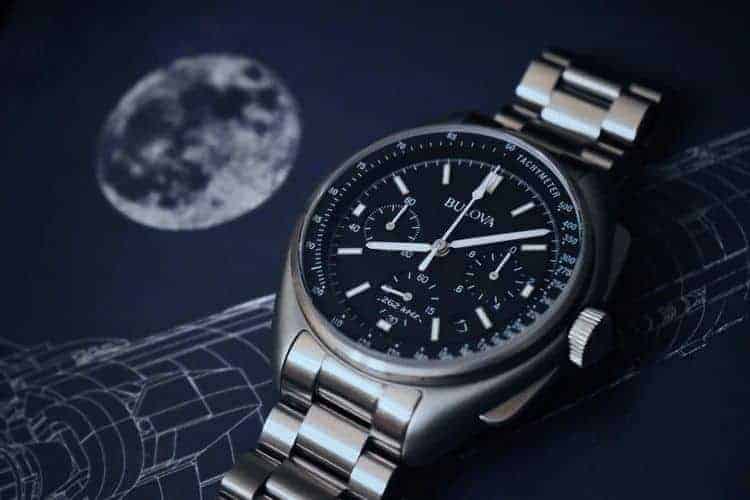Deciding to buy a high-quality watch is not an easy process. Aside from considering your resources, you also need to know what you have gotten yourself into. Doing some research about what the different watch movements are and how to choose the right timepiece is deemed necessary.
However, you also have to learn about the different watch complications present as they will help you decide on the additional features you want your watch to have.

What Is A Watch Complication?
A watch complication is an additional function that exists in a watch, aside from telling the time, which displays seconds, minutes, and hours on a timepiece. Watch complications feature special functions that can help you simplify or improve your life.
When watches have more complications in them, they are more difficult to produce and design since additional elements should be built according to the standard movement. Nowadays, many complications are found in watches, from simple displays to more complex functions.
Watches with complications in them are in demand since they are designed from genius innovation, which highlights their complexity, skill, and precision to produce an elegant timepiece.
Types of Watch Complications
1. Date
A date complication is the simplest complication there is. This function displays the date on the watch. It should be manually adjusted at the end of the 30th day of each month and also at the end of February to show the accurate date.
2. Calendar
The calendar complication in most watches needs to be continuously adjusted to make sure that the date displayed is accurate. These watches reset once a full month is completed which is represented by 31 24-hour cycles.
There are leap years in our calendar and the days of a month vary. So, two advanced calendar complications were produced by watchmakers to keep up with our calendars in a more accurate manner without the need to adjust the date after every month. The calendar complication will stay functional and precise as long as the watch is running smoothly and without any problem.
3. Chronograph
A chronograph describes the timing functionality of a watch which is commonly known as a stopwatch. The chronograph complication gives the user the ability to measure time intervals without having an effect on the normal time-telling function of the watch.
With its incredible accuracy in recording time from 1/100 second to 12 hours, the chronograph is among the desired functions in a watch.
4. Power reserve
The power reserve indicator allows the user to know the amount of time the movement can run without winding and how much power the watch has in the mainspring.
Mechanical watches store a certain amount of power to function well before it stops. A fully wound automatic watch, on the other hand, has around 36 to 42 hours of energy before it should wind up again. There are automatic timepieces that have power reserve complications that can last up to ten days. A manual-wind watch possesses a power reserve which may last from 2 to 15 days.
5. Moon Phase
Most watch enthusiasts have a fascination with the moon phase complication because of its beauty, technical prowess, and utility.
The whole duration of a lunar cycle, from new moon to new moon, takes 29 days, 12 hours, 44 minutes, and 3 seconds. The moon phase function indicates if our moon is a new, quarter, half, or fool by monitoring the current phase of our moon in the lunar cycle.
With the use of a rotating disk, the watch shows the illuminated portion of the moon to pinpoint its cycle as it would be seen from the Earth. The aperture on the dial displays the moon phases, giving an actual graphic image of the moon. This image travels across the dial just as how the moon moves in the sky.
6. Time Zone
Watches have a time zone complication to manage the time in various areas of the world. This type of complication is commonly found in pilot watches and military watches which allows the user to adjust and understand time quickly when you are traveling.
Watches that have a GMT feature show time in two or more time zones. They are often patronized by people who like
7. Minute Repeater
A repeater complication is a wonder in modern horology. Once a slide lever is pressed on the case, the watch uses chimes to indicate the time. A minute repeater hits the hours, quarters, and minutes on request while a quarter repeater strikes for hours and quarters only.
Repeaters give the visually impaired individuals the ability to tell time. These complications also allow you to know the time even when it is dark. Nowadays, minute repeaters are considered a very complex function as they entail professional craftsmanship, beautiful acoustics, and masterful engineering.
8. Tourbillon
A tourbillon is a complication that rotates the escapement, balance wheel, and balance spring continuously as the watch movement is running. Because of the effects of gravity and the nature of the design of the spots in the balance wheel, the timekeeping rate varies in different watch positions.
Conclusion
Watches with complications do not only aim for functionality but also accuracy. Complicated watches require precise engineering and technical innovation to gain more incredible functions. The good watch strap is equally important as watch itself. Be sure to select one from best watch straps for great looks and reliability.
Watch complications are installed in timepieces to make your life easy. But if you also know what trusted distributor to offer you watch components for repair, it makes everything more convenient. Click here to know more.





